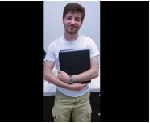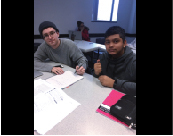What is perimeter, area, and volume?
The perimeter is the distance around the outside of an object. The area is the amount of space inside the object. The volume is the amount of space that the object occupies.
The perimeter is one dimensional, therefore its units are linear. The area is two dimensional, therefore its units are square. The volume is three dimensional, therefore its units are cubic.
Equation of Perimeter, Area and Volume
Perimeter of a Square
P=4s, where s is the length of the side of the square.
Perimeter of a Rectangle
P=2L+2W, where L is the length and W is the width of
the sides of the rectangle.
Perimeter of a Triangle
P = a+b+c, where a, b , and c are the lengths of the sides.
Perimeter of a Circle
P=C=2πr=πd, where r is the radius and d is the diameter.
Area of a Square
A=s2, where s is the length of the side of the square.
Area of a Rectangle
A=LW, where L is length and W is width of the sides of the rectangle.
Area of a Triangle

Area of a Circle
A=πr2, where r is the radius.
Volume of a Cube
V=s3, where s is the length of the side.
Volume of a Sphere

Volume of a Prism or Cylinder
V=Ah, where A is the area of the base, h is the height.
Volume of a Pyramid or Cone

Example of
Perimeter, Area and Volume
Find the perimeter of a triangle with the following side lengths: 2 cm, 5 cm, and 10 cm.
Write down the formula
P = a+b+c
Plug in the values into the formula
P = 2 cm + 5 cm + 10 cm = 17 cm

Practice Problems of
Perimeter, Area and Volume
• Find the perimeter of a square that has a length of 5 cm.

• Find the area of a rectangle that has a length of 3 cm and a width of 5 m.

• Find the volume of a sphere that has a radius of 10 m.

Take Home Points for
Perimeter, Area and Volume
• Perimeter is defined by the distance around the outside of the object
• Area is defined by the amount of space inside the object
• Volume is defined by the space that the object takes up
• Different objects have different formulas to calculate their perimeter, area, and volume

Private Tutoring
One on One Private Tutoring
Grade 5 to 8 Math. English Writing, Science.
Grade 9 , 10 Math. English. Science.
Grade 11, 12 Math, Advanced Functions, Calculus, Chemistry, Biology, Physics. English.
Queen Elizabeth Academy’s Private Tutoring Program provides our students with one on one, personalized tutoring lessons that are based on a step by step, easy to understand methodology.
Semi private Actual lesson.
Our Approach of Tutoring
At QEA, we focus on tutoring the students and build his or her foundation and understanding. Our tutoring approach facilitates independent thinking, so that our students can analyze the questions properly. Our tutors go through math and science lessons step by step, and make sure that you have a firm foundation before they move onto more complex math and science concepts.
For our science and math tutoring programs, we focus on providing step by step explanations during the tutoring session, facilitating the student’s understanding of the math and science concepts.
Math and science are cumulative. Therefore, building a good foundation is important for the student’s long-term success. In our math and science tutoring, we focus on clarifying the student’s knowledge gaps to help them build a good foundation in math and science.
Our tutors will categorize types of problems and organize knowledge making it easier for students to retain

Teaches: English grade 5 to 12
PhD Candidate, English literature
Writing Course Director, Guelph-Humber University
Harvard University
Queen Elizabeth Advisor
Designed Learning Strategies for our courses.
Teaches: Calculus, Advanced Functions, Physics
PhD Candidate, University of Toronto
Taught university math tutoring classes for 2+ years
Teaches: Advanced Functions
1200+ hours of tutoring experience. Specialized in making complex concepts easy to understand

Teaches: Calculus, Grade 9-12 Math
Certified Teacher, Mathematics.
6 years of university teaching experience as a TA

Queen's University, Canada
Major in chemistry
3+ years of teaching experience including university level and high school level chemistry
Queen Elizabeth Academy!

Victor is excellent at communicating with parents and students and he is also very good at listening and acting on everyones feedback. Highly recommend QEA!!read more
at your neighbourhood
*Note that Queen Elizabeth Academy offers in class learning at our Mississauga location, at Unit 5, 1020 Johnson’s Lane. The rest of the locations we offer credits online via Zoom (TM) with live teaching.


















































